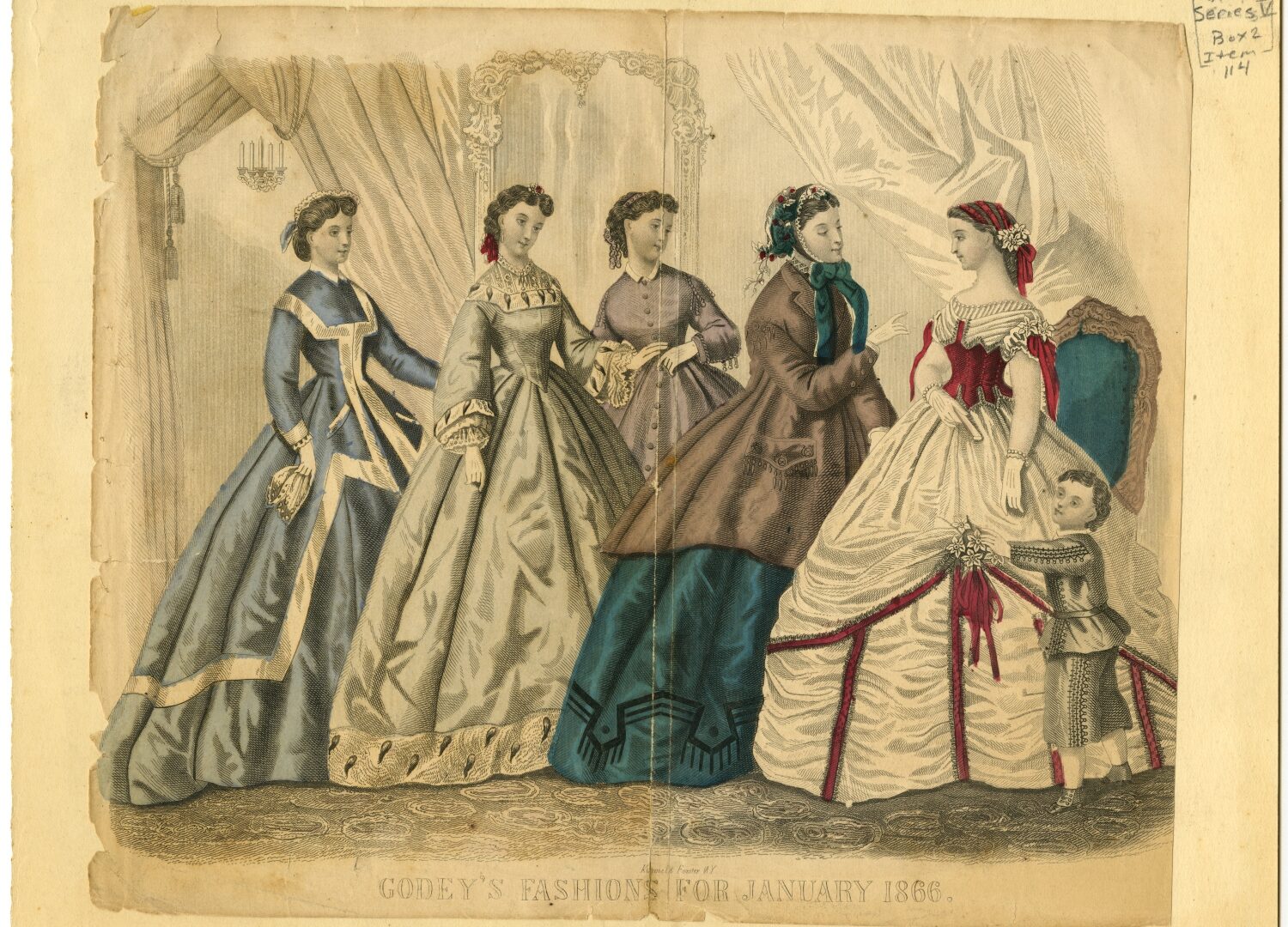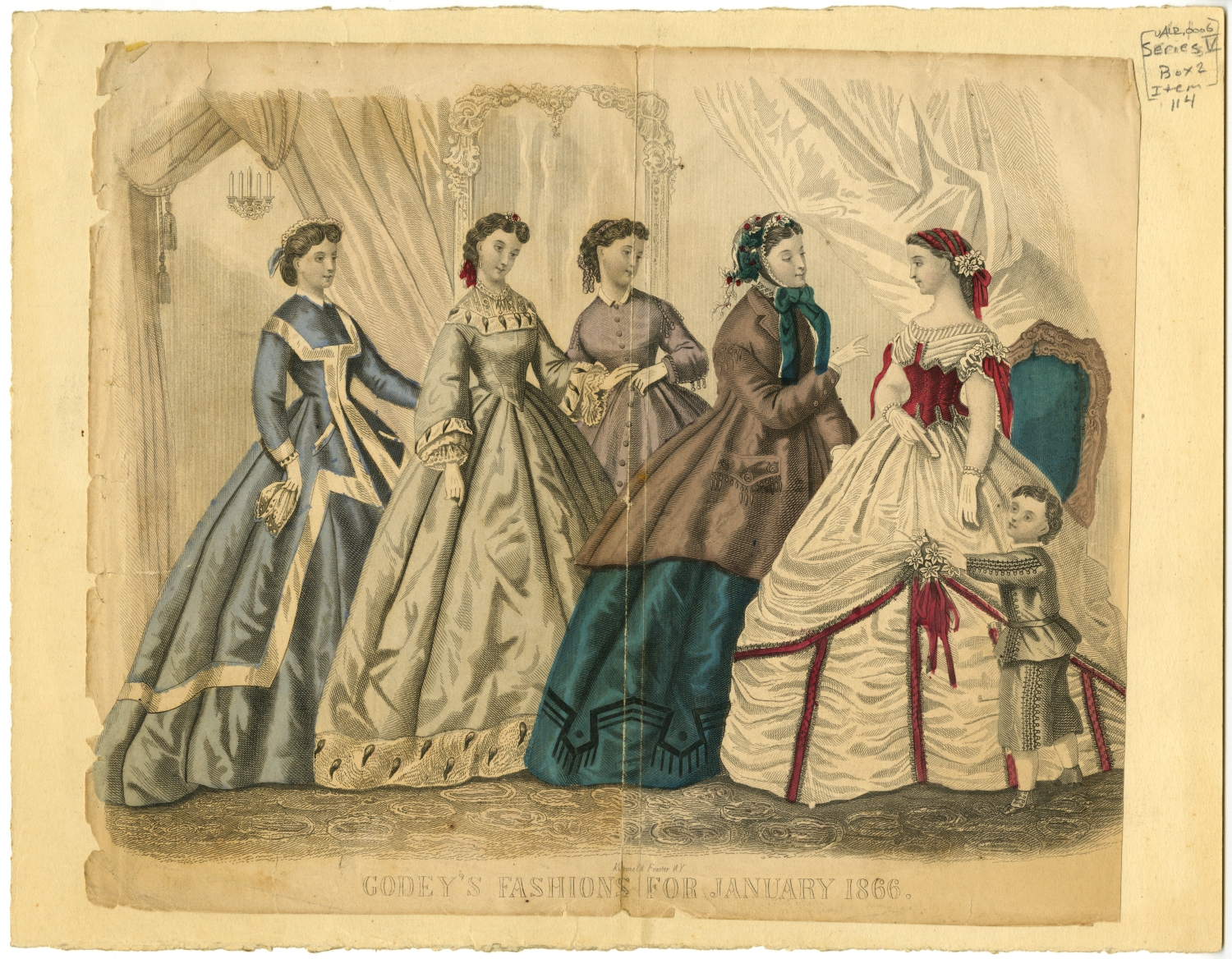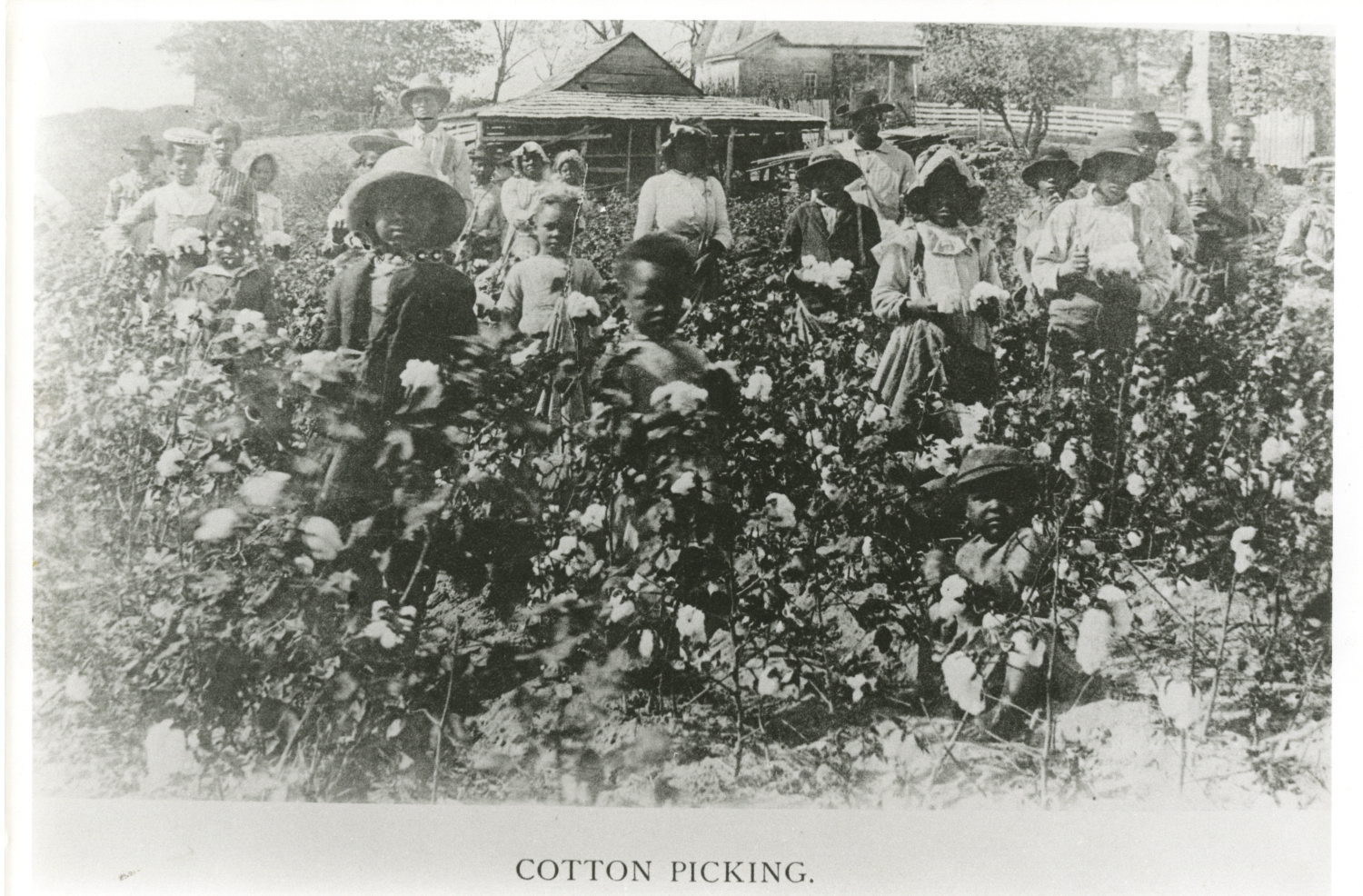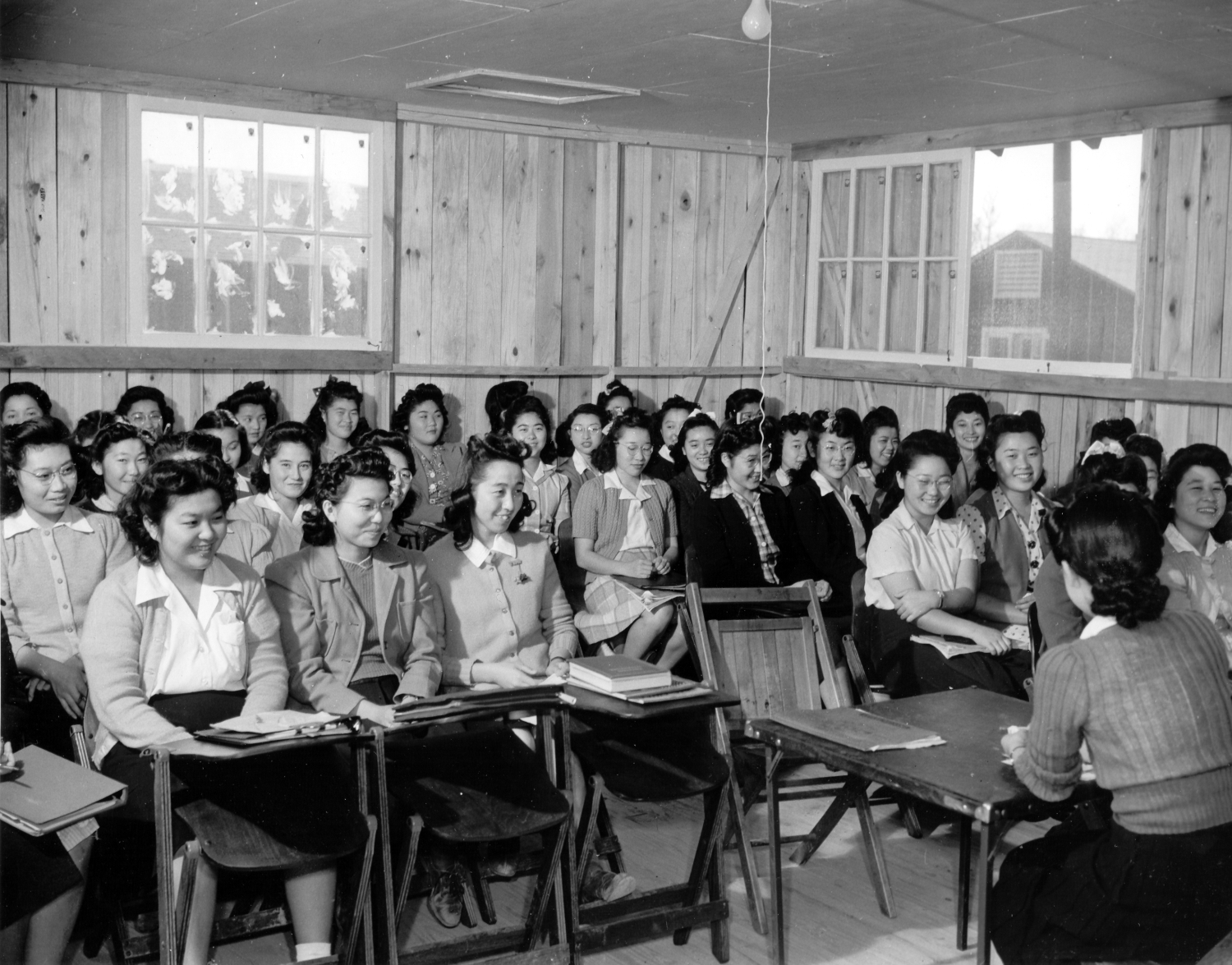How Women’s Clothing Changed Over Time
Introduction
In this activity, you will look at six photos that show how women and girls dressed in the past. These photos will help us learn what kind of clothes different groups of women wore in the past, how women’s clothes changed over time, and how clothes that we wear today differ from clothes that women and girls wore in the past.
Activity Questions
"Godey's Fashions for 1866 January"
- What clothes are the women in Photo 1 and Photo 2 wearing? Describe their clothes.
- When was each of these photos taken? How did women’s clothes change between 1866 and 1897?
- Do you think that the women in these photos were wearing these clothes every day? Or were those clothes for special occasions?
- The dresses in Photo 1 and Photo 2 were expensive and difficult to make. Were all women in the past able to wear these types of dresses?
- In the past, people did not buy clothes in stores. Some people made their own clothes, but others paid a tailor or a seamstress to make their clothes. Do you think that the women in Photo 1 and Photo 2 made or bought their dresses?
- Do the clothes in these photos are like clothes that women wear today?
- Do you like the clothes in these photos? Do you think they were comfortable to wear? Would like to wear similar dresses today?
Workers picking cotton
- What clothes are the women and girls in Photo 3 and Photo 4 wearing? Describe their clothes.
- When was each of these photos taken?
- Do you think that the women and girls in these two photos were wearing these clothes every day? Or were those clothes for special occasions?
- The clothes in Photo 3 and Photo 4 were not expensive or difficult to make. Did all women and girls in the past wear these types of clothes?
- In the past, people did not buy clothes in stores. Some people made their own clothes, but others paid a tailor or a seamstress to make their clothes. Do you think that the women and girls in Photo 3 and Photo 4 made or bought their dresses?
- Do the clothes in these photos are like clothes that women wear today?
- Compare clothes in these photos to the dresses from Photo 1 and Photo 2. Are they similar or different?
Home economics class at Rohwer Relocation Center
- Where were Photo 5 and Photo 6 taken? Who are the young women in these two photos?
- What clothes are the women wearing? Describe their clothes.
- Do you think that the women in these photos were wearing these clothes every day? Or were those clothes for special occasions?
- Do the clothes in these photos are like clothes women wear today?
- Do you like the clothes in these photos? Do you think they were comfortable to wear? Would you like to wear similar clothes today?
- Compare the clothes in these photos to the clothes from Photos 1, 2, 3, and 4. Are they similar or different? How did women’s clothes change over time?
- Do you think that all women wore the same kind of clothes in the past? Do all women wear the same kind of clothes today?
Primary Sources
To learn more about the primary sources featured in the activities above, click the following links:
- Berry pickers with fruit in Springdale
- Speeches, excerpts, and bulletins by ministers and laypeople, page 22, “Statement Made by 16 Ministers of Little Rock,” September 3, 1957
- “Godey’s Fashions for 1866 January”
- Kettle Drum club in Fort Smith
- Workers picking cotton
- Home economics class at Rohwer Relocation Center
- New Homemakers of America
Arkansas Social Studies Standards
Social Studies (History)
- Strand: History
- Content Standard 12: Chronology, Change Over Time, and Contextualization – Students will analyze chronology, patterns of continuity and change over time, and contextualization of historical events.
- Grade 1
-
- H.12.1.3 Compare present-day families, objects, and events with those in the past using visual representations, news stories, and artifacts (e.g. daily life tasks, food, clothing, transportation, communication, recreation)
Grade 2
-
- H.12.2.3 Compare life in your community past and present using maps, photographs, news stories, artifacts, or interviews (e.g. transportation, communication, recreation, jobs, housing)
Key Terms
More Information
N/A
Downloadable Guides and Handouts
We encourage K-12 educators to use History Alive: Virtually! in a way that will best match their classroom needs. The “Exercise” handout includes a complete exercise as featured on this website, the “Primary Sources” handout includes only primary sources used in the exercise, and the “Questions” handout includes analytical questions from the exercise but is editable and can be easily changed to best match students’ needs.
How Women’s Clothing Changed Over Time – Exercises




